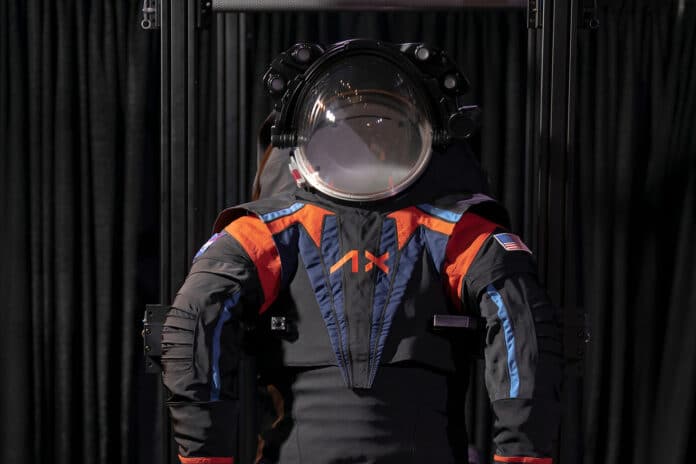Back in 2022, NASA selected Axiom Space and Collins Aerospace to develop next-generation spacesuits designed to replace the decades-old gears that astronauts still use today. The space agency has now expanded its existing contracts to advance spacewalking capabilities in low Earth orbit and moonwalking services for Artemis missions.
The latest Exploration Extravehicular Activity Services task orders, each with a value of $5 million, are intended to have Axiom Space begin work on a spacesuit for use in low Earth orbit and Collins Aerospace begin work on a spacesuit for Artemis missions on the lunar surface.
Encouraging innovation in the suits and services available from both companies helps NASA further its missions for the benefit of humanity as part of its Moon to Mars exploration approach and obtain potential options should any development issues arise.
“These task orders position NASA for success should additional capabilities become necessary or advantageous to NASA’s missions as the agency paves the way for deep space exploration and commercialization of low Earth orbit,” said Lara Kearney, manager of the Extravehicular Activity and Human Surface Mobility Program at NASA’s Johnson Space Center in Houston. “Using this competitive approach, we will enhance redundancy, expand future capabilities, and further invest in the space economy.”
Axiom Space was previously awarded an initial task order to develop a spacewalking system for a demonstration of partial gravity on the lunar surface during Artemis III. Earlier this year, Axiom Space unveiled its spacesuit design – with joints allowing wearers to move around easily and a helmet equipped with a light and an HD camera – for its original order. The company will now begin early assessments for extending that suit for use outside the International Space Station.
Likewise, Collins Aerospace previously received a contract to develop a spacewalking system for a demonstration in microgravity outside the space station. It will now begin early assessments for extending that suit for use on the lunar surface.
NASA has said it is looking for redundancy in the suit systems despite the differences between low Earth orbit and the lunar surface. It includes different gravitational fields, natural space environments such as radiation, and mission tasks like floating in microgravity or walking in partial gravity. The providers will begin their design modification work through an initial milestone set by the awardee in their respective proposals for the task order’s initial content.
NASA is looking to fulfill its spacewalking needs through 2034. The space agency will decide to pursue the full extent of the follow-on task order options with a given provider culminating in a flight demonstration; the provider must complete all necessary safety and performance verifications before the flight and ultimately complete a spacewalk or moonwalk at the respective destination.
Each provider on the Exploration Extravehicular Activity Services contract will own the spacesuits it develops under the contract and can pursue other commercial customers and explore non-NASA commercial applications for the associated technologies.
